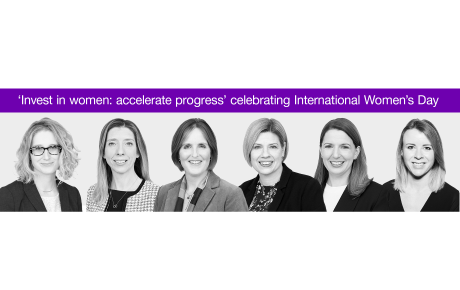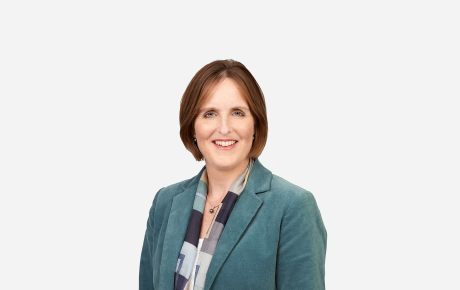
Back to the future
London needs to rekindle its old entrepreneurial spirit to prosper in future, says Paul Lawrence, Chief Underwriting Officer, Hiscox London Market.
A lot has changed since 2014, when the first London Matters report was published. There have been two general elections, a referendum and three governments, for a start. The pace of change has been less frenetic in the London Market, but welcome change to make London more efficient is on the way. But other, more fundamental change is still needed and I think we need to look to the market’s past to understand where its future lies.
London Matters 2017 offers a mixed picture on where London now stands (or at least stood at the end of 2015, which was the latest data available on which to compile the report) in the global insurance industry. It is holding its own in commercial insurance, reinforcing its position in its core markets of the UK and US, gaining share in the marine, aviation and energy markets, and becoming a growing provider of cyber insurance. But it is also losing market share in reinsurance and in the emerging markets, while its cost base still puts it at a disadvantage to its rivals.
London has reinforced its position in markets where it is already strong, and has continued to lose business in sectors where it was already falling back.
You could argue the report doesn’t tell us much that we don’t already know: London has reinforced its position in markets where it is already strong, and has continued to lose business in sectors where it was already falling back.
But I would argue that its real importance is in driving continued debate among market participants on where London’s future lies and what we must collectively do to remain relevant in a fast-changing marketplace.
The London Matters 2014 report asked three key questions about how our market will keep up in tomorrow’s global insurance industry:
- How can it become more innovative and entrepreneurial?
- How can it lower costs and improve its services?
- How can it find and tap into new markets?
The report has certainly been a catalyst for us at Hiscox to change how we think and act. We’re working hard on being more creative, coming up with new products and looking to open up other markets beyond Lloyd’s traditional heartlands. We’re also taking big strides in becoming more efficient. We’re not alone in taking a long hard look at how we operate in what are very challenging conditions. But while there is good work being done in the streamlining its target operating model, the London Market still has a long way to go to address its expense problem.
New products
The original report highlighted that London’s reputation for innovation isn’t what it used to be, and at Hiscox we’ve been working hard to come up with new products. Our recently launched FloodPlus policy aims to meet a shortfall in flood cover for US homeowners, providing easily understandable protection with higher limits and broader cover than that offered by the National Flood Insurance Program. We were very proud when it was named “Best Product Innovation” in the 2016 Lloyd’s Market Innovation Awards.
We’ve also developed a new product recall warranty policy for aircraft component manufacturers. It’s been in development for a year and is designed to fit exactly with their contractual exposures, filling a gap in their existing insurance cover.
We’re also borrowing the tech industry’s concept of regular hackathons to solve problems, with fortnightly “lunch labs” and monthly “happy hours” in which our teams bounce new ideas off each other about how to improve our products, distribution, capacity and efficiency.
New markets
The London Matters 2014 report identified London as being at growing risk from local insurance markets, and at Hiscox we’ve sought to rethink the value we offer to customers and brokers around the world. Hiscox MGA enables us to blaze a trail in new markets, linking experienced, talented local underwriters with capital from London Market insurers to write risks that wouldn’t otherwise have come to London. These risks include providing Latin American insurers with reinsurance cover to respond to their customers’ growing taste for owning expensive artworks or insuring terrorism and political violence.
We can’t just sit at Lloyd’s and wait for business to come to us, which is why we’re helping to export London’s unique knowledge and risk appetite to new places where there will be valuable new opportunities.
Our Alternative Distribution team, led by Adam Holberry, is also adapting to the changing conditions by doing business outside of the traditional London Market model, responding to brokers’ drive to place business more efficiently and offering welcome new solutions to clients with difficult risk problems.
London thrives when there is no model or precedent to price a risk. That’s when our real entrepreneurial talents shine. But we can’t just sit at Lloyd’s and wait for business to come to us, which is why we’re helping to export London’s unique knowledge and risk appetite to new places where there will be valuable new opportunities.
Expenses still growing
The high cost of doing business in the London Market remains a problem. London Matters 2014 stated that London’s expenses were nine percentage points higher than other markets, putting it at a distinct disadvantage at a time of intense competition. It’s a problem that is only getting worse.
In 2013, when the data for the original London Matters report was collected, Lloyd’s expense ratio was 37.10%. In 2016, it had risen to 41% and its combined ratio was 97.9%, which means the market barely made a profit in what was a ‘normal’ year for catastrophes.
London’s problem is that it’s paying too much to acquire business – particularly smaller-premium business – that then costs too much to process, meaning that there is little or no margin on it.
We all have to take some responsibility for this situation. At Hiscox, we’re targeting a 5% reduction in our costs and looking to streamline the process of handling lower-value risks so our senior underwriters can focus on what the London Market does best: large, complicated exposures.
A lot of work is also being done through our London Market Target Operating Model programme to make us a simpler and more efficient place to do business. But all that effort will go to waste if the cost of acquiring business continues to go up each year.
London’s problem is that it’s paying too much to acquire business – particularly smaller-premium business – that then costs too much to process, meaning that there is little or no margin on it.
It’s important the market concentrates on the overall cost of business, so I’m all in favour of Lloyd’s recent decision to target reducing expenses by making syndicates focus on their combined ratio, rather than loss ratio, in their reporting and business planning. It will help to focus everyone’s minds on their real performance, which isn’t just about how much was paid in claims, but also how much was also spent on acquiring, processing and managing that business.
The truth is that Lloyd’s performance in recent years, when there have been relatively few catastrophes, has been mediocre and flattered by syndicates releasing money from prior-year reserves. If underwriters can only (just about) make money when there are no big catastrophes then change is needed.
We need change
In a May presentation to syndicates’ CEOs and CUOs, Jon Hancock, Lloyd’s Performance Director, quoted Einstein when looking at the performance gap between the market and its closest competitors. He reminded us all of Einstein's definition of insanity: “Doing the same thing over and over again and expecting different results.” We need to change, Jon said, if we’re going to drive sustainable, profitable growth for the future.
We need to get away from the idea that competition is about continually lowering the price. It isn’t. It’s about ensuring the process is as efficient as possible, which brings a host of benefits, not least of which is bringing down transaction costs.
We’re now in a situation where premiums have fallen, while exposures have risen, as have costs. The Target Operating Model work may aim to bring down the cost of processing business, but there has been no progress in bringing down the cost of acquiring the business – quite the opposite, in fact.
We’re reaching a turning point, as right now both brokers and insurers are hurting. Rather than cannibalising and churning London’s existing business, we all need to look at how to increase the amount of business coming into the market.
We’re reaching a turning point, as right now both brokers and insurers are hurting. Rather than cannibalising and churning London’s existing business, we all need to look at how to increase the amount of business coming into the market. London forged its reputation by serving its clients well while also being nimble, creative and bold. We need to rekindle that spirit once more.
There are plenty of new risks that require the specialist knowledge and underwriting expertise for which London is renowned. The new business being done by Hiscox MGA and our Alternative Distribution unit is proof of that. We now need to develop other new products that address growing risks and give London’s brokers all the resources they need to sell these across the globe. That – as opposed to paying more for existing business – is how we’ll guarantee the London Market’s future prosperity.




